Welcome back to the Ninja Gaiden Love/Hate series! It’s been a few months now since I embarked on my journey to play every Ninja Gaiden game (and their various revisions), but I knew that I would be diving back in soon enough. The first of three Ninja Gaiden games announced for 2025, I have been so hyped for Ninja Gaiden: Ragebound. Not only was it the first new Ninja Gaiden title in more than a decade, but it was being made by the devs behind Blasphemous, one of my all-time favourite games. My expectations were high based on pedigree alone, but every bit of new information we got about the game just cemented my belief that this game would be great. Would Ragebound live up to my lofty expectations? Read on to find out…
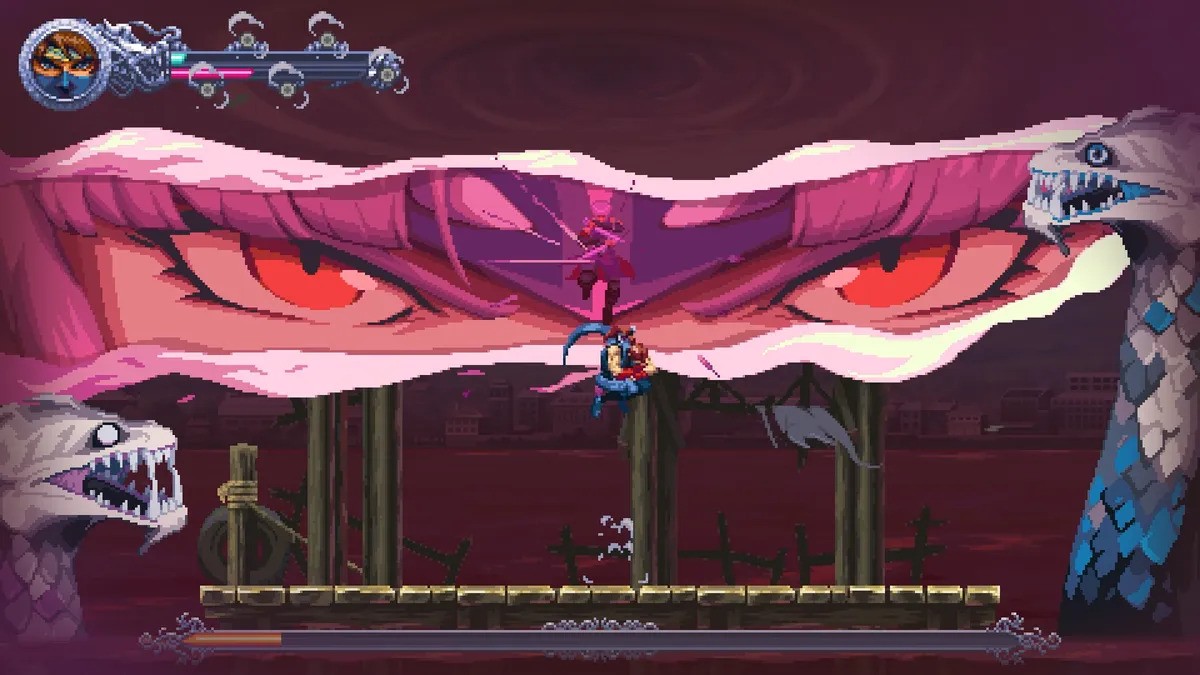
Love
- Guillotine Boost – You know how every game these days has parry mechanics and is either open world or a roguelike? Well, I want every game to have guillotine boost from now on. The guillotine boost is a technique where, if you land a slash on an enemy or projectile while jumping, you will “boost” off of them in the process. This sounds fairly simple, but it ends up being game-defining for several reasons:
- It effectively acts as an extra “jump”, making it extremely useful for platforming and speedrunning.
- It can be chained endlessly: as long as you keep landing guillotine boosts, you will stay airborne!
- It helps keep the game’s pace lightning-fast, as it keeps you in forward motion the entire time.
- It’s skill-based: if you’re too quick with your slash, or you spam the attack button in mid-air (like I did initially), you will likely miss your boost. You have to train yourself to be precise (like a goddamn ninja) and only attack when you’re ready to do so.
- It’s absolutely busted against certain bosses. Seriously, once I mastered the guillotine boost, I started deploying it all the time in combat. I must have spent around 99% of the battleship fight in the air, and I loved it! This is also clearly intentional, as the higher-difficulty modes effectively force you to guillotine boost all over the place if you want to survive.
- Kenji & Kumori – When your Ninja Gaiden game lets you play as someone other than Ryu Hayabusa, it’s a massive feat when you don’t miss him in the slightest. Kenji and Kumori are a joy to interact with, with well-defined personalities and opposing philosophies. Kenji is brave, noble, naïve, and old-fashioned. Kumori is brash, snide, cynical, confident, and worldly. Their personalities entirely clash, which makes it so entertaining to see them forced to work together and grow a begrudging respect for one another. It’s classic odd-partner stuff, and I never once tired of it.
- Satisfying Gameplay Loop – Ragebound bears some similarity to the NES Ninja Gaiden trilogy: a side-scrolling mixture of constant movement, precise platforming, and fast-paced, (mostly) one-shot kill combat. There’s a Hotline Miami-like pace to the game – death will put you back to the nearest checkpoint right away so you can get back into the action. These checkpoints are spaced out well, right as your health should be low, so you never lose too much progress. It’s also not an extremely long game either (it’s about seven hours to complete), but it encourages replaying levels to maximize your scores, so it’s exactly as long as you want it to be.
- Difficulty Tuning – After struggling to keep up with the bosses in Blasphemous II, I was kind of worried that The Game Kitchen would make Ragebound punishingly difficult. Thankfully, the game felt entirely fair during my initial playthrough… not only that, but The Game Kitchen give you all sorts of ways to customize your experience!
- If you want the game to be more akin to the original games, then you unlock hard mode after beating the game once. This mode is sure to please the old-school games, because it is NES HARD! They don’t just change around damage and health numbers, Ragebound‘s hard mode introduces more enemies, adds new, stronger enemy variants, and adds significantly more hazards to the levels. Thankfully, it is entirely optional, but at least the people up for that kind of challenge have that option available.
- Ragebound also has an assist mode with several accessibility options. Surprisingly, these don’t affect achievements or scores at all, so you can turn enemy damage down to 0% if you just want to breeze through the experience. I really appreciate that you can make your experience with this game as easy or hard as you want it to be!
- Lore Expansion – Explicitly connecting the 3D Ninja Gaiden games to the NES games!? Getting to see the Black Spider clan’s headquarters and hierarchy!? Finding out that Muramasa and Obaba teamed up to seal away a demon incursion at some point!? A reference to the Mugen Tenshin clan!?! This game is an absolute feast for me, specifically (a Ninja Gaiden/Dead or Alive nut).
- Pixel Art – The anime-inspired pixel art in Blasphemous II sort of clashed with its tone, but that same style here in Ragebound is absolutely perfect. The pixel art here is uniformly great, especially for our heroes: you can tell so much about them just from the way they’ve been drawn.
- Old-School Throwback Soundtrack – Ragebound‘s soundtrack perfectly communicates the feel of a fast-paced 90s SNES ninja side-scroller action game. There’s honestly not a lot more that needs to be said, they fucking nailed the assignment!
Mixed
- The Story – While Kenji and Kumori’s relationship cause me to have my full investment in this game’s plot, the actual story on offer is incredibly thin: demons (fiends, goddammit!) are on the loose, you need to collect three crystals to stop them. There’s very few twists in that plot. That said: the narrative is serviceable, and has never been that important to a Ninja Gaiden game, so I don’t mind too much.
- Hypercharge – One of the major mechanics of Ragebound is hypercharge: if you hit a glowing enemy with the right weapon, you will absorb their essence, which causes your next attack to instantly kill whatever it hits (or do extra damage against a boss and possibly stun them). While it does feel pretty good to land a hypercharge attack, they basically only exist to justify including enemies that take more than one strike to kill. I guess that this shakes-up the gameplay somewhat, but it’s kind of pointless against standard enemies, and missing a hypercharge attack feels awful. There’s also the fact that, any time you encounter an enemy which takes more than one hit to kill, a glowing enemy will show up seconds later: it makes the solutions to these encounters feel entirely prescribed and scripted. Maybe the gameplay would feel too samey without it, but I can’t help but feel that Ragebound wouldn’t be worse off without this particular mechanic.
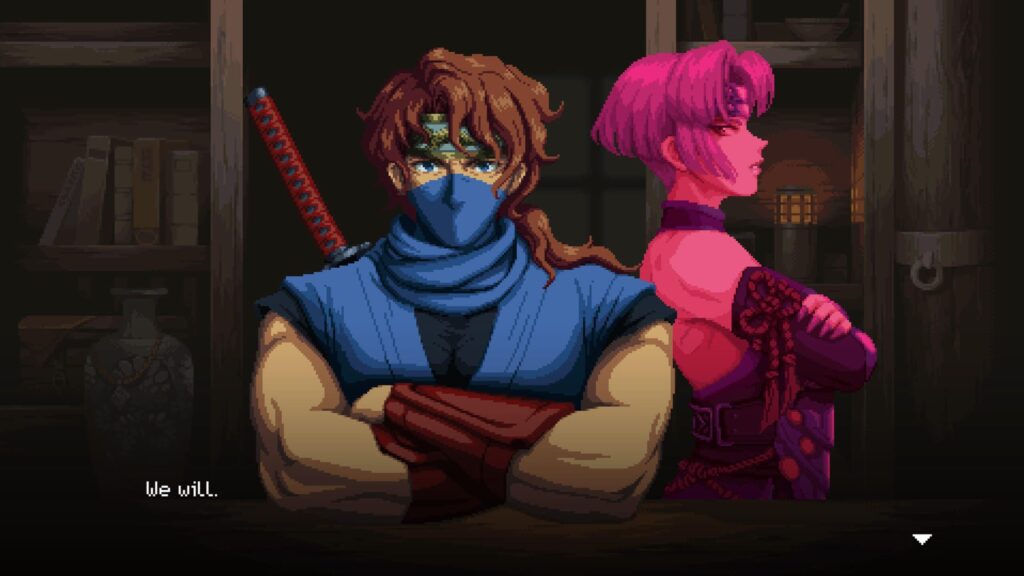
Hate
- Platform Grabbing – The platforming in Ragebound is fantastic, except for one little thing: you can jump and grab onto any platforms above you from below by pressing Up. Sounds easy enough, but if you’re in a timed platforming sequence and need to maximize forward motion and grabbing onto that ceiling at the same time, you’ll probably fall to your death. I must have died more times to the game not registering that I want to grab the fucking ceiling than any single enemy.
- Carpel-Tunnel-Inducing Boss Battles – Bosses in Ragebound have huge health bars, and your attacks do very little damage to them. However, your attack animation is extremely fast, so the faster you can button mash, the more damage you can do to a boss within your limited attack windows. That’s all well and good, however, most bosses are difficult enough that you will likely need to face them multiple times before you beat them… My hands legitimately hurt after some of these fights, the repeated mashing forced me to stop playing on multiple occasions.
- Uninspired Level Design – The levels you fight through in Ragebound are entirely forgettable. Construction site? Military base? Lots of caves and forests? Hell, even the burning Hayabusa village level has been done before! They’re entirely serviceable, but the don’t do the great pixel art justice.
- Dull Upgrade System – You will find golden scarabs while exploring, which you can spend at Muramasa’s shop. However, I found the perks on offer to be very underwhelming. Sure, if you want to make the game harder, then the negative perks are tempting, but I found the rest to be damn-near superfluous. I had more than fifty scarabs in my inventory by the end of the game, because I just didn’t find anything that I wanted to use them on.
Ninja Gaiden: Ragebound lived up to the hype I had for it, and then some. It’s just a great, well-designed little experience from start to finish. I love Kenji and (especially) Kumori, they’re such a cool pairing that I hope we get to see again in the Ninja Gaiden/DOA-verse soon! The game’s constant forward momentum also makes it a joy to play. I have my concerns about Ninja Gaiden 4, but even if it ends up being a disappointment, at least us Ninja Gaiden fans are eating good with Ragebound.
If you liked this article…
I hate ads. You hate ads. In order to stop polluting my site with obtrusive and annoying ads, I’ve elected to turn them off on IC2S. That said, writing still takes time and effort. If you enjoyed what you read here today and want to give a token of appreciation, I’ve set up a tip jar. Feel free to donate if you feel compelled to and I hope you enjoyed the article! 🙂
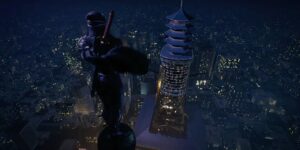
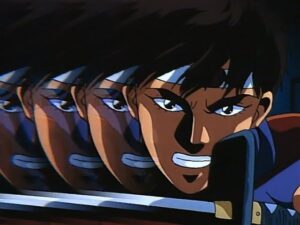
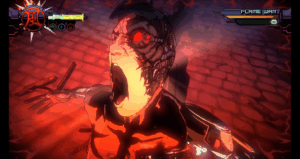
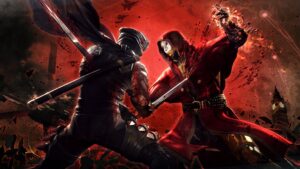

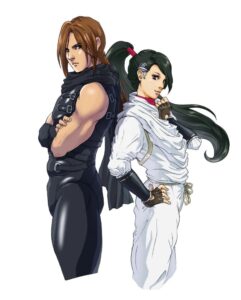
Great review, I haven’t bought NG Ragebound yet. The animation and music are so good, but there are too many stupid settings to play: The hypercharge system, The double jump, The demon realm timed parts.
It’s a good game, but it’s not good enough.
I would agree that a lot of the mechanics feel stapled on. Hypercharge feels like it’s only there to shake up the gameplay every once in a while and to open up bosses for a stun. The Ragebound attack is also just there out of necessity for a screen-clearing super move. That said, Guillotine Boost is so cool that it becomes game-defining, and I rather enjoyed the different sort of challenge that Kumori’s segments brought (although I can certainly see how they could be infuriating).
Pretty! This has been a really wonderful post. Many thanks for providing these details.